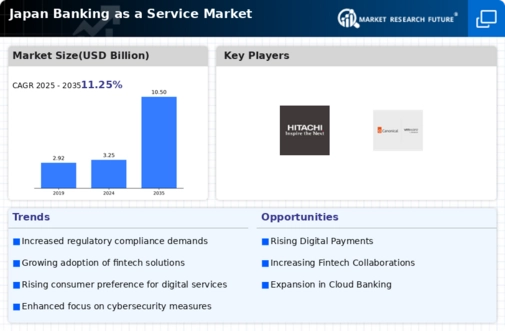The Japan Banking as a Service Market is experiencing a dynamic transformation as financial institutions and fintech companies leverage technology to deliver innovative banking solutions. The competitive landscape is characterized by a mix of traditional banks, digital banks, and emerging fintech startups that are keen on capitalizing on the growing demand for seamless and efficient banking services. This market is characterized by its rapid evolution, driven by shifting consumer preferences, evolving regulatory environments, and technological advancements.
Players in this space are vying for a competitive edge by offering products that cater to the diverse needs of both businesses and consumers, ultimately creating a more integrated and customer-centric banking ecosystem.
Tokyo Star Bank has carved a unique niche within the Japan Banking as a Service Market by focusing on providing tailored banking solutions to small and medium-sized enterprises as well as individual customers. The bank benefits from its strategic location and established reputation, allowing it to effectively penetrate various market segments. Its strengths lie in its robust technological infrastructure, which enables efficient processing and delivery of banking solutions, as well as its commitment to excellent customer service.
Moreover, Tokyo Star Bank's adaptability to changing market trends and its ability to innovate its service offerings have positioned it as a formidable player in Japan's competitive banking industry landscape.
Higo Bank also stands out in the Japanese Banking as a Service Market, emphasizing a digital-first approach to banking by providing a wide range of services, including payment processing, digital wallets, and lending solutions. The bank has successfully established a strong market presence through strategic partnerships and collaborations within the fintech ecosystem. One of its key strengths is its product diversification, which caters to both personal and business banking needs. Higo Bank's commitment to technological innovation gives it a competitive edge, and its proactive approach to mergers and acquisitions further solidifies its market standing.
The bank continually seeks opportunities to expand its service offerings, making it a prominent player in Japan's evolving banking landscape.













Leave a Comment